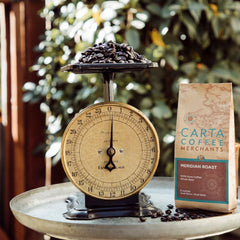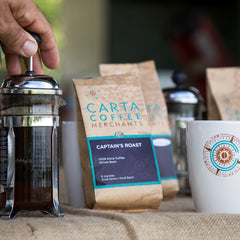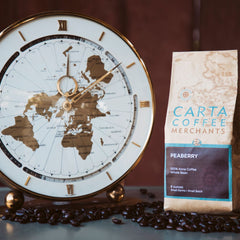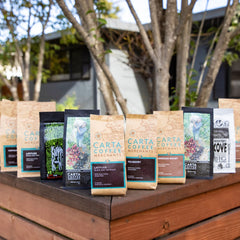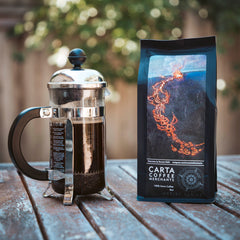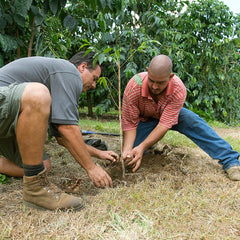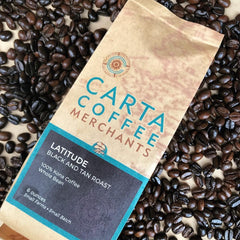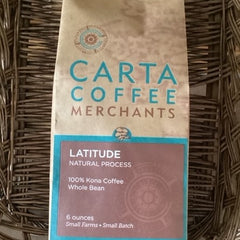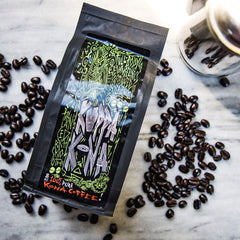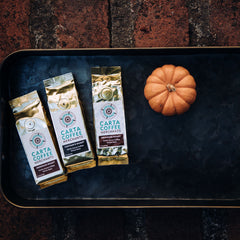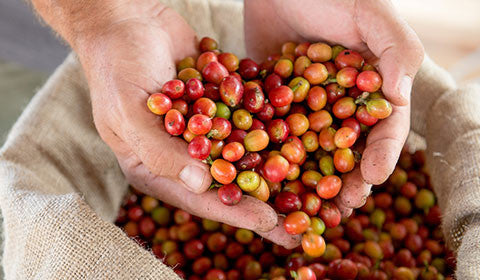Posted on

If you’re in the market for a coffee grinder you’ve probably heard that a burr grinder is 10x better than a blade grinder. All the coffee aficionados swear by it.
Why is that?
After all, isn’t the purpose of grinding coffee to mash up the beans into tiny small pieces?
It has been said that using a blade grinder is akin to chopping your fruits and vegetables with a large wooden mallet. The end result is not going to turn out well. We’re going to look at the differences between burr and blade grinders and learn what purpose each one is best used for.
Blade Grinders
A blade coffee grinder consists of two sharp metal blades that rotate at a high RPM. You pour in a cup or so of coffee beans and then cover the top. You push the power button and the coffee beans are destroyed by the two blades. Blade grinders are usually more inexpensive than the burrs.
The problem with blade grinders is that they do not create a uniform grind.
Why are the size of the grinds so important?
It’s all in the mechanical process. When blade coffee grinders come in contact with the coffee bean, the only thing they can do is destroy the bean. Each individual bean gets pulverized into different little sizes. There is no consistency in the grind.
Blade grinders tend to create a lot of “coffee dust”. This dust is referred to in coffee circles as “fines”. These fines are very small compared to the rest of the grind. Unless you filter or sift them out prior, the fines will brew right alongside the normal sized coffee grains.
These fines (due to their small size) will over-extract and this will result in a very bitter, unpleasant flavor. Being that there is no uniform code for manufacturing blade grinders, some will create more fines than others.
It all goes back to the coffee bean. If you have inferior quality, store-bought coffee beans, then a blade grinder will work just fine. To really appreciate good coffee, you will need to start out with high quality coffee beans. Using a blade grinder with high quality beans can ruin the taste of the coffee (due to the fines created during the grinding process).
If you absolutely must grind your coffee by blade (and have no other choice) then a neat little trick is to use “pulses” when you grind. Press the power button and then let it go every few seconds. 1-2 seconds seems to be the agreed upon time amongst the experts. By doing this, you will reduce the amount of fines created by the blades and have a tastier cup of coffee than you would had you kept your finger on the power button until the beans were pulverized.
Burr Grinders
Burr grinders come in many different shapes and styles. Some are hand-held with mechanical cranks, others are very expensive electronic devices.
They all have two things in common: control & consistency.
Inside a burr grinder is a piece of jagged metal known as a “burr”. The nature of physics is what causes burr grinders to grind beans to a uniform size. Unlike blade grinders, you won’t get a lot of fines (if any at all).
As with anything in life, there are good burr grinders and there are not-so-good burr grinders. However, a poor burr grinder is general regarded as better than the best blade grinder.
What makes for a poor-quality burr grinder?
If the burrs are molded (instead of milled), have a rough surface texture or dull cutting edges, then it is generally regarded as poor-quality. You will find these kinds of burrs in the lower end models that can be found in several discount stores and websites.
If you want a high-quality grinder then you should look for one with a smoother flat surface, cutting edges that are sharp along with it being milled (which means that the entire burr itself has been ground from a solid piece of metal).
Electronic Grinders vs. Hand Held Grinders
Back in the old days, electronic grinders were too expensive and too unreliable. Most people ground their coffee by hand. If you can find one of them, these antique coffee grinders can produce a really good grind.
Most coffee aficionados grind their coffee right before making it. It’s a morning ritual that they cherish and is part of their waking up process. For other people, it’s impractical for them to stand in their kitchen for 3 minutes every morning while hand turning a crank to grind the beans.
If your kitchen is tiny and your budget is tight, then a manual grinder might be the best route to go. It stores easily and can be cleaned quickly. If you travel, there are some models that will fit nicely in a suitcase.
For the electronic devices, you’re going to want to find one that has a heavier weight to it, bigger grinding burrs and a low grind speed. If you’re looking to experiment in your quest to create the perfect cup of coffee then you should buy an electronic grinder that will allow you to change the settings. They can run anywhere from $50 to $700, depending on model, brand name and available features.
The Gourmia GCG195 is the Cadillac of electronic grinders. It features 15 grind settings for various types of coffee along with an easy clean mode. This is one of the highest rated grinders on the market today.
If a manual grinder is more up your alley, then a Porlex JP-30 will do just fine. It’s made in Osaka, Japan by quality craftsmen who have years of experience and in-depth knowledge of what makes a good manual grinder. It has ceramic conical burrs (which won’t dull over time) and has a wide range of grinds, from ultra-fine powder to French press.
When it comes to 100% Kona Coffee, you’re going to want to get the best possible grind that you can, so we recommend looking into a burr grinder if possible. Of course, if you own a blade grinder and currently use that to grind your coffee, you may continue to do so. A good grind has a large impact on the quality of your cup of coffee, and when it comes to 100% Kona Coffee, you want to make sure you’re getting the best possible flavor in your cup.


